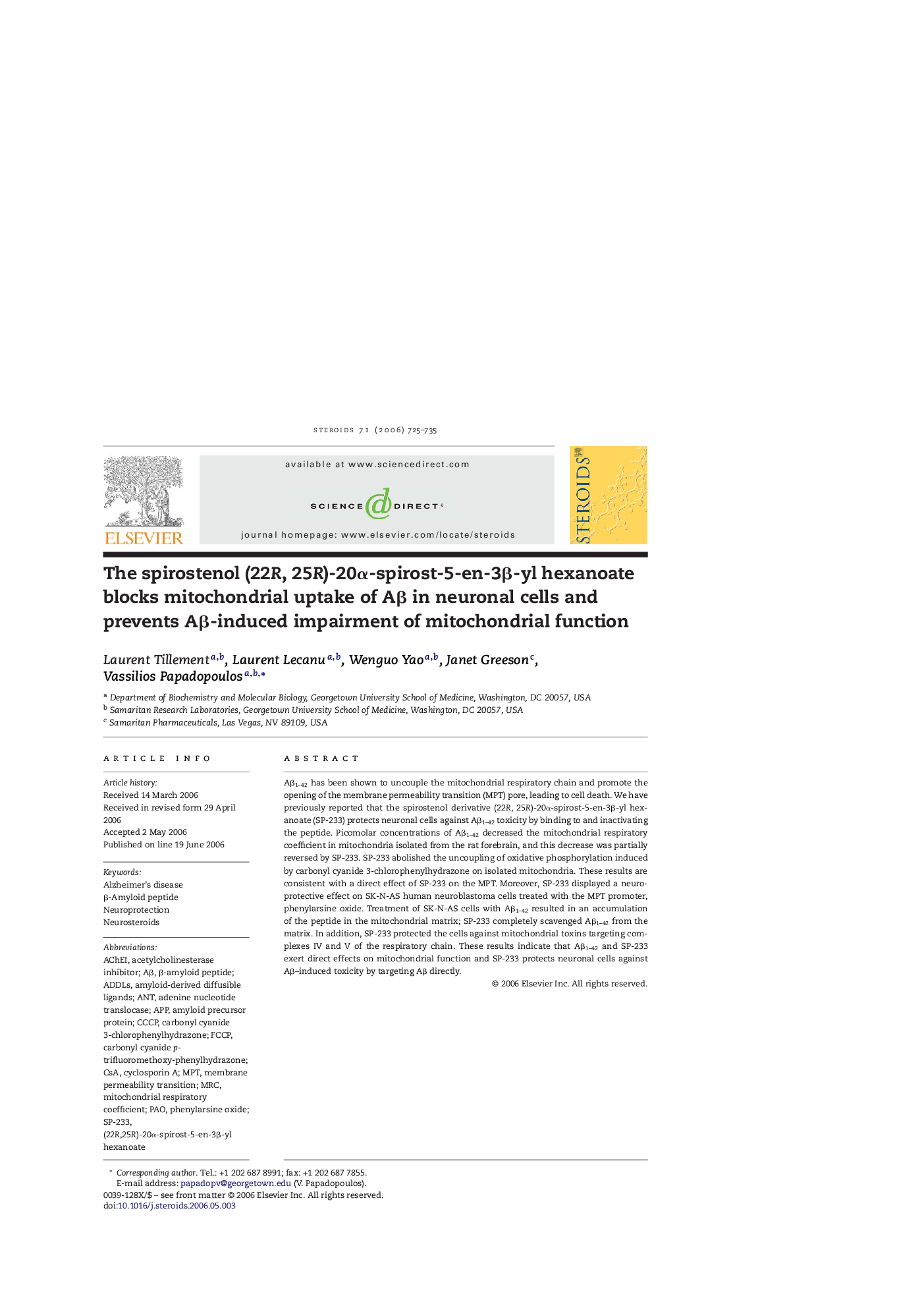| Article ID | Journal | Published Year | Pages | File Type |
|---|---|---|---|---|
| 2028957 | Steroids | 2006 | 11 Pages |
Aβ1–42 has been shown to uncouple the mitochondrial respiratory chain and promote the opening of the membrane permeability transition (MPT) pore, leading to cell death. We have previously reported that the spirostenol derivative (22R, 25R)-20α-spirost-5-en-3β-yl hexanoate (SP-233) protects neuronal cells against Aβ1–42 toxicity by binding to and inactivating the peptide. Picomolar concentrations of Aβ1–42 decreased the mitochondrial respiratory coefficient in mitochondria isolated from the rat forebrain, and this decrease was partially reversed by SP-233. SP-233 abolished the uncoupling of oxidative phosphorylation induced by carbonyl cyanide 3-chlorophenylhydrazone on isolated mitochondria. These results are consistent with a direct effect of SP-233 on the MPT. Moreover, SP-233 displayed a neuroprotective effect on SK-N-AS human neuroblastoma cells treated with the MPT promoter, phenylarsine oxide. Treatment of SK-N-AS cells with Aβ1–42 resulted in an accumulation of the peptide in the mitochondrial matrix; SP-233 completely scavenged Aβ1–42 from the matrix. In addition, SP-233 protected the cells against mitochondrial toxins targeting complexes IV and V of the respiratory chain. These results indicate that Aβ1–42 and SP-233 exert direct effects on mitochondrial function and SP-233 protects neuronal cells against Aβ–induced toxicity by targeting Aβ directly.
